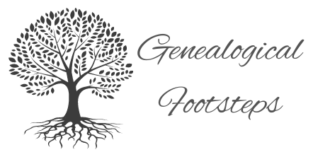Historical newspapers archives, old newspapers archives, and historic newspaper databases are invaluable resources for anyone looking to trace their family history. These archives provide a unique glimpse into the past, not only providing key facts on ancestors, but also giving insight into the social and historical context in which they lived.
The significance of historical newspapers cannot be overstated for genealogical research. While birth, marriage, and death certificates are important, they only provide a small snapshot of an ancestor’s life. Historical newspapers, on the other hand, can provide a wealth of information on an individual, from their occupation to their political views, and even their hobbies.
Family researchers can also learn about the communities in which their ancestors lived, the events that shaped their lives, and the values that were important to them through historical newspaper archives. This context is essential for piecing together a family’s story and understanding how one’s ancestors fit into the larger historical narrative.
Key Takeaways:
- Historical newspapers are pivotal for genealogical research, providing detailed insights into ancestors’ lives and societal contexts.
- Digital newspaper archives offer convenient and efficient access to historical data and articles from the comfort of home.
- Metadata in digital archives, like publication date and author, significantly enhances the precision and efficiency of research.
- Technological advancements, such as OCR and cloud storage, have revolutionised newspaper archiving, ensuring preservation and accessibility.
- Ethical considerations in research are crucial, especially when dealing with sensitive information and sharing findings.
- Historic newspaper databases serve as comprehensive resources, providing a wealth of information and insights into the past.
- Researchers may face legal and access issues, such as copyright restrictions, requiring exploration of alternative resources.
- Navigating through biases in historical newspapers requires critical engagement and cross-referencing of information.
Discovering Family History Through Old Newspapers
For those looking to explore their family history, digital newspaper archives and vintage newspaper collections can be invaluable resources. With newspaper archives online, accessing historical articles and clippings has never been easier. These resources offer a wealth of information and insights that can help connect the dots between family members across generations.
When searching for family history information, digital newspaper archives provide a convenience that traditional newspaper collections do not. Accessed from the comfort of one’s own home, online newspaper archives can be easily searched, providing access to thousands of articles in seconds that would otherwise take hours or even days to locate.
For a more immersive experience, however, vintage newspaper collections can provide a tangible connection to the past. With physical copies of old newspapers, readers can explore the context in which their ancestors lived, seeing the news stories and advertisements of the time that would have influenced their lives.
Another advantage of using newspaper archives online and vintage newspaper collections is the ability to uncover previously unknown stories. With access to newspaper articles stretching back decades or even centuries, researchers may stumble upon connections and stories that would have otherwise remained hidden.
Utilising Metadata in Digital Archives
Diving deeper into the digital realm, metadata in digital archives becomes a pivotal point in enhancing the efficiency and depth of your research. Metadata, essentially data about data, provides a structured description of the content, facilitating a more targeted and precise search. It’s like having a detailed map that guides you directly to the treasure in an ocean of information.
The Significance of Metadata in Research
Metadata in digital archives typically includes details such as the publication date, author, location, and keywords related to the content. This auxiliary information becomes a powerful tool, enabling researchers to filter through vast digital archives, homing in on the specific information relevant to their genealogical exploration.
Strategies for Effective Metadata Utilisation
- Keyword Searches: Utilise the metadata to perform keyword searches, focusing on names, places, or events that are pertinent to your family history.
- Date Ranges: Leverage date metadata to narrow down your search to specific time periods, ensuring the information is contextually relevant to your ancestors’ timelines.
- Geographical Filters: Use location metadata to focus your search on newspapers from specific regions or countries, aligning with your ancestors’ known locations.
- Author Information: In some instances, exploring articles by specific authors, especially in the context of columns or editorials, may provide insightful perspectives that are relevant to your research.
Bridging Connections with Metadata
Metadata not only aids in discovering direct information about ancestors but also helps in uncovering the socio-political and cultural backdrop against which they lived their lives. This context, gleaned through exploring articles, advertisements, and editorials of the era, provides a richer, more nuanced picture of your ancestors’ lives and times.
Preserving and Cataloging Metadata
Ensure that you meticulously record the metadata associated with each article or clipping you utilise. This practice enhances the credibility of your research and provides a clear pathway for revisiting sources or for others to validate or build upon your findings.
Technological Advancements in Newspaper Archiving
Imagine walking into a room, where the whispers of the past are preserved in neatly stacked newspapers, each page a window into a bygone era. Now, envision having the power to access this room from the comfort of your home, with the world’s history at your fingertips. This is the marvel brought about by the technological advancements in newspaper archiving.
| Title | Description |
|---|---|
| Transformation from Physical to Digital | Transition from manually sifting through physical newspapers to accessing archives digitally, enhancing preservation and accessibility. |
| Optical Character Recognition (OCR) | OCR technology converts printed text into digital format, enabling quick searches through millions of pages, simplifying the discovery of specific information. |
| Cloud Storage | Utilisation of cloud storage ensures the preservation of digital archives for future generations, protecting them from physical damage and decay. |
| Integration of AI and ML | The incorporation of Artificial Intelligence and Machine Learning enhances archiving technologies, enabling smart searches, understanding user queries, and providing relevant results while accounting for historical spelling variations and OCR errors. |
| Bridging Past and Future | The blend of traditional, manual exploration of archives with digital advancements ensures the preservation and accessibility of historical narratives, making them available to anyone, anywhere, at any time, thereby ensuring that stories from the past continue to resonate through future generations. |
The Transformation from Physical to Digital
In the yesteryears, researchers and genealogists would spend countless hours, magnifying glass in hand, poring over fragile, yellowing pages of archived newspapers. The process was not only time-consuming but also posed a risk to the delicate, often deteriorating, original documents. Enter the digital age, and the scenario transformed dramatically.
The Power of Optical Character Recognition
Sophisticated scanning technologies, such as Optical Character Recognition (OCR), have enabled the conversion of printed text into digital text, making it possible to search through millions of pages within seconds. Imagine finding a needle in a haystack, effortlessly!
Preserving History with Cloud Storage
Furthermore, cloud storage solutions ensure that these digital archives are preserved for future generations, safeguarding them against physical damage and decay.
The Integration of AI and ML in Archiving
The integration of Artificial Intelligence (AI) and Machine Learning (ML) in archiving technologies has opened new vistas, enabling smart searches that can understand user queries and provide relevant results, even correcting for common historical spelling variations or OCR errors.
Bridging the Past and Future
Thus, the meticulous, often romanticised, manual exploration of physical archives has been beautifully melded with the efficiency and accessibility of the digital world, ensuring that the rich tapestry of history, woven through the pages of newspapers, is available to anyone, anywhere, at any time. This seamless blend of the past and the future not only preserves stories of yore but also ensures they continue to resonate through generations to come, all with a simple click!
Importance of Ethical Research Practices
Embarking on a journey through the pages of historical newspapers, we often find ourselves immersed in the lives of those who walked this earth before us. It’s a captivating adventure, where every article or snippet might hold the key to unlocking mysteries of our ancestors. However, amidst this exciting quest, it’s paramount to tread lightly, respecting the privacy and dignity of the individuals whose stories we uncover. Imagine stumbling upon a century-old scandal or a sensitive event involving your great-grandparents. While it might be tempting to delve deeper and share these findings, it’s crucial to pause and ponder the potential implications. Would sharing this information cause distress to living relatives? Is it essential to our understanding of our family history? Navigating through these ethical dilemmas requires a delicate balance, ensuring our research doesn’t inadvertently become an invasion of privacy.
Handling Sensitive Information: A Delicate Dance with the Past
As we leaf through the fragile pages of the past, we are often confronted with stories that are not only historically significant but also deeply personal and sometimes, painful. The tales of our ancestors might intertwine with historical events that are traumatic or controversial. Here, the ethical researcher becomes a guardian of these stories, ensuring they are handled with the utmost care and empathy. It’s essential to approach these narratives with a respectful and non-exploitative mindset. When we decide to share these stories, perhaps in a family blog or a published genealogy, framing them with sensitivity and context is vital. It’s not just about recounting events but doing so in a way that honors the experiences and challenges faced by our ancestors.
Publishing Findings: A Responsibility to the Present and the Future
When the time comes to share our meticulously researched findings with the world or our family, the ethical considerations come to the forefront once again. It’s a moment to reflect on the stories we’ve unearthed, especially those that hold the potential to impact living relatives or tarnish memories. The act of publishing is not merely sharing data and stories; it’s about weaving a narrative that respects the past, acknowledges the present, and is considerate of the future. It’s about ensuring that the tales of yesteryears are narrated in a manner that is respectful, insightful, and above all, ethically sound. This approach not only safeguards the dignity of the individuals in our findings but also ensures that our genealogical pursuits are conducted with integrity and empathy, leaving a respectful legacy for future researchers.
Exploring the Historic Newspaper Database
When it comes to family research, utilising a historic newspaper database can offer an extensive range of resources and insights. These databases often include a vast collection of newspaper archive resources, such as historical news articles and vintage newspaper clippings, which can provide a unique and valuable perspective into the lives of our ancestors.
One of the significant advantages of using a historic newspaper database is the ability to access a vast amount of information in one place. Rather than tracking down individual newspapers or sifting through physical archives, users can easily search for specific keywords or dates within the database. This convenience allows users to focus their research efforts and uncover stories that may have otherwise gone undiscovered.
Moreover, historical news articles and vintage newspaper clippings provide a wealth of knowledge about the social and historical context in which our ancestors lived. These resources offer a glimpse into the everyday lives and experiences of those who came before us, providing a richer understanding of our familial roots.

Legal and Access Issues in Newspaper Archives
Navigating through the vast sea of historical newspapers can sometimes bring researchers face to face with unexpected barriers, particularly in the realm of legal and access issues. Imagine finding a promising lead in your genealogical journey, only to be halted by a locked gate, symbolising restricted access to a crucial newspaper archive. This is a common scenario encountered by many family history explorers.
Certain archives impose access restrictions due to various reasons such as copyright laws, preservation concerns, or privacy issues. For instance, some newspapers published within the last 70 years might be under copyright protection, limiting the availability of these documents to the public. Additionally, archives may protect sensitive information, especially if it involves individuals who may still be alive, to safeguard privacy.
But fear not, for every locked gate often has a key. To navigate through these legal mazes, consider exploring alternative avenues. Engage with online forums or communities dedicated to genealogy – they can be treasure troves of advice and alternative resources. Additionally, consider utilising inter-library loan systems or exploring partnerships between archives that might provide a legal pathway to access restricted materials. Sometimes, reaching out directly to the archive or library can open doors, as they might provide access to the material in a controlled environment, ensuring that legal and ethical guidelines are adhered to.
Subscription vs. Free Access Databases
Navigating through the myriad of available resources, you’ll likely encounter a crossroads: to subscribe or to explore free databases? Both paths offer their own sets of advantages and challenges.
Unlocking Premium Content
Subscription-based platforms often unlock a treasure trove of premium content, offering access to exclusive databases, meticulously organised records, and sometimes, expert assistance. These platforms might provide a more user-friendly experience, advanced search capabilities, and higher-quality images, making your research journey smoother and potentially more fruitful. However, the cost might be a barrier for some researchers, and there’s always a risk of not finding the specific information you’re seeking, despite the subscription fee.
Exploring Free Archives
On the other hand, free access databases open doors to numerous archives without the financial commitment. They can be particularly useful for those who are new to genealogy and are not yet ready to invest in a subscription. However, they might come with their own set of challenges such as limited access to certain archives, potentially less organised or indexed data, and perhaps a more complex search process.
Balancing Act
Striking a balance between subscription and free platforms might be the key. Starting your research using free databases can help you understand the available resources and refine your research skills. Once you have a clear research direction, investing in a subscription might provide you with the advanced tools and exclusive resources to delve deeper into your ancestry exploration.
In essence, whether you choose a subscription-based platform or a free database might depend on your specific needs, expertise level, and the depth of information you’re seeking. Both paths offer valuable insights and the potential to uncover the rich stories hidden within the folds of historical newspapers, waiting to be discovered and woven into your family tapestry.
Uncovering Stories Only Time Can Tell
Historical newspaper research is a critical component of genealogical exploration. One of the most significant advantages of searching old newspapers is the ability to uncover stories that only time can reveal. These long-forgotten stories are often hidden in newspaper archives and can provide a wealth of information about ancestors.
By delving into old newspapers archives, researchers can gain a deeper understanding of their family history. Historical newspaper research is not limited to obituaries, birth announcements, and marriage notices. Often, surprising and unexpected stories can be found in the pages of old newspapers. These stories can include accounts of social events, disaster reports, criminal proceedings, business announcements and more.
Conducting historical newspaper research takes patience and perseverance. It requires sifting through countless pages of newspapers in search of hidden gems. It is a process that requires attention to detail and a commitment to uncovering the stories that may have otherwise been forgotten.
The search for these stories is well worth the effort. Through historical newspaper research, individuals can gain a better understanding of their family’s past and the context in which their ancestors lived. It can provide a unique perspective on historical events and provide a more personal glimpse into the past.
As with all research, there are challenges. However, with the advent of digital newspaper archives and newspaper archives online, many of these challenges can be overcome. Researchers can now search for specific keywords and phrases, narrowing the scope of their search and making it more efficient. Additionally, digital archives are often fully text-searchable, allowing for more in-depth and accurate exploration.
Navigating Through the Lenses of Bias
Embarking on a journey through historical newspapers is akin to time travel, yet it’s pivotal to remember that the stories unfolded in these pages were penned through particular lenses, often tinted with the biases and perspectives of the times, or the newspaper’s editorial stance. The narratives might be skewed, presenting a version of events that may uphold certain viewpoints while marginalising others.
Deciphering the Undersaid and Unseen
When you encounter a story, especially one that elicits a strong emotional or moral response, pause and ponder: Who is telling the story? Whose voices are absent? Engaging with the material critically, considering the socio-political climate of the time, and recognising potential biases allows you to extract information judiciously. It’s not about disregarding the information but interpreting it with an informed, discerning eye.
Cross-Referencing: Your Shield Against Bias
One of the most potent strategies to navigate through biased narratives is cross-referencing. Validate the information by consulting multiple sources. Explore different newspapers from the same time period, and if possible, from varied geographical and political contexts. This approach not only provides a more holistic view of the events but also aids in identifying consistencies and discrepancies in the narratives, enabling a more nuanced understanding of your ancestors’ times and lives.
Engaging with the Personal Amidst the Public
While newspapers provide a glimpse into the public and historical domain, it’s essential to weave these narratives thoughtfully into your family’s personal history. How did the larger events and societal norms impact your ancestors’ lives and choices? Engaging with biased narratives while keeping the personal stories of your ancestors in focus allows you to construct a family history that is both rich and contextually rooted.

Using Historical Newspapers as Primary Sources
When it comes to family research, historical newspapers archives and old newspapers archives are some of the most reliable and authentic primary sources that one can use. These vintage newspaper collections offer a unique perspective on the past, providing a rich and detailed insight into the lives of our ancestors.
Whether you’re searching for birth or death announcements, marriage notices, obituaries, or news stories that describe historical events as they happened, historical newspapers are an invaluable resource. They offer a glimpse into the social and cultural context of the time, and can help researchers understand the lives of their ancestors in a much deeper way.
In addition to their historical value, newspapers can also provide vital clues for piecing together family trees and tracing lineage. They often contain information about individuals and families that might not be found through other sources, making them an essential tool for genealogical research.
Explore a Vintage Newspaper Collection
If you’re looking for a more old-fashioned experience, a vintage newspaper collection can also be an excellent resource. These collections are often found in libraries or archives, and can provide a tactile and immersive way of exploring the past.
By searching through old newspapers on microfilm or in their original print form, researchers can get a sense of what life was like in a particular era. They can read stories and advertisements from a time long gone, and gain a deeper appreciation for the everyday struggles and triumphs of their ancestors.
Tracing Lineage Through Newspaper Clippings
Historical newspaper research is an invaluable resource for anyone looking to trace their family lineage. Through the use of digital newspaper archives and newspaper archives online, it is possible to find relevant newspaper clippings that connect family members across generations. These clippings can fill in gaps in family trees and shed light on previously unknown ancestors.
When conducting historical newspaper research, it is important to have a methodical approach. One effective strategy is to start with a specific ancestor and search their name in various newspapers from the time period in which they lived. This can reveal information such as birth and death announcements, marriage notices, and obituaries.
In addition to searching for specific ancestors, it is also useful to explore the social and historical context of the time period in which ancestors lived. By reading news articles and editorials from the time, it is possible to gain a better understanding of the world in which they lived and the events and issues that shaped their lives.
Digital newspaper archives and newspaper archives online make this process easier than ever before. These resources allow users to search millions of newspaper articles from around the world with just a few clicks. It is also possible to save and organise clippings for future reference, making it easier to build a comprehensive family tree over time.
Understanding the Social and Historical Context
Historical news articles provide invaluable insights into the social and historical context of the past. Using a historic newspaper database or other newspaper archive resources can help researchers gain a deeper understanding of the world in which their ancestors lived.
Through newspaper articles, readers can see how their ancestors interacted with and were affected by the events and issues of their time. By exploring the language and attitudes expressed in the articles, readers can also gain a better understanding of the cultural norms of the past.
A historic newspaper database is an excellent resource for exploring the social and historical context of the past. With access to a vast collection of articles from various newspapers and time periods, researchers can gain a 360-degree view of their ancestors’ lives.
One of the benefits of using a historic newspaper database is the ability to search for articles by keyword. This allows researchers to find articles on a specific topic or event and gain a deeper understanding of its historical significance. Researchers can also search for articles by date, which can help them place their ancestors in a specific historical context.

Preserving Family Stories Through Newspaper Archives
A historic newspaper database and a vintage newspaper collection offer invaluable resources for preserving family stories that might otherwise be lost to time. Through thorough exploration of these archives, familial narratives can be uncovered and passed down through generations.
Using a historic newspaper database ensures that important family stories are not lost to time. By searching through old newspapers and utilising the resources available in these databases, a wealth of information can be found and added to the family lineage.
Additionally, a vintage newspaper collection can serve to preserve important stories and events, providing a physical record that can be passed down through the years. With access to these archives, family members can relive stories from the past and discover new connections to their ancestors.
Through the process of searching old newspapers, families can gain a deeper understanding of their history and the events that shaped their ancestors’ lives. Utilising a historic newspaper database and a vintage newspaper collection, family stories that were once lost can be rediscovered and preserved for future generations to come.
Preserving family stories through newspaper archives not only adds to the richness of the family’s history, but it also provides a connection to the past and serves as a reminder of the struggles and triumphs of those who came before us. By investing time in researching and exploring historical newspaper archives, families can ensure that their family stories will continue to be passed down through the generations for years to come.
Collaboration and Community in Genealogical Research
Embarking on a journey through your ancestral past can be akin to assembling a vast, intricate puzzle where each piece is a snippet of your family’s history. Collaboration and Community in Genealogical Research often become the cornerstones that transform this seemingly solitary quest into a shared adventure. Imagine unearthing a fascinating story about your great-grandmother in an old newspaper archive. While the discovery is exhilarating, you might find yourself entwined in a web of additional questions and mysteries. Here’s where the magic of community and collaboration sparkles!
Communities, often formed on online platforms, bring together genealogy enthusiasts, experts, and curious beginners, creating a melting pot of knowledge, expertise, and shared curiosity. These platforms become spaces where your discoveries from historical newspapers can be validated, expanded, or even challenged by others who might have stumbled upon related or contrasting information in their research. Imagine sharing that story about your great-grandmother and finding someone who has a different piece of the puzzle – perhaps an article that features her sibling, providing a richer, more holistic view of your ancestry.
Collaborative platforms, on the other hand, not only serve as repositories of myriad stories and data but also as tools that facilitate the seamless sharing and comparison of findings. They enable genealogists to cross-reference information, validate findings, and build upon each other’s research, weaving a tapestry that narrates a more comprehensive family saga. The synergy between individual research and community insights ensures that the tapestry is not just detailed but also accurate and multifaceted, offering future generations a treasure trove of their lineage, complete with stories, facts, and vibrant historical contexts.
Search Old Newspapers for Missing Gaps
When searching old newspapers for family stories, it’s important to utilise both a historic newspaper database and a vintage newspaper collection. By doing so, one can fill in missing gaps and uncover valuable information that may not have been available through other means.
Through the process of searching old newspapers, previously unknown family connections can be uncovered, and new stories can be added to the family’s history. By making use of these resources, families can gain a more complete understanding of their past and the events that shaped their ancestors’ lives.
Overcoming Challenges in Historical Newspaper Research
While historical newspaper research can provide valuable insights into family history, it can also present some challenges. Fortunately, there are strategies to overcome these obstacles and uncover the stories of our ancestors.
One challenge of historical newspaper research is the sheer volume of information available. With digital newspaper archives and newspaper archives online providing access to millions of pages of newsprint, it can be overwhelming to search through all the results. This is where using specific keywords and search terms can be helpful in narrowing down the search to relevant articles.
Another challenge is deciphering old and sometimes faded print. Digital newspaper archives can often offer clearer images of the original articles, but if the text is still difficult to read, utilising a magnifying tool or adjusting the contrast can make a difference.
Furthermore, historical newspaper research requires an understanding of the social and cultural context of the time period being researched. This means that readers must be aware of the language and terminology used in the past, as well as the political and societal events that may have influenced news coverage.
To effectively navigate these challenges, using digital newspaper archives and newspaper archives online is recommended. These resources often have search functions that allow for targeted keyword and date searches, as well as the ability to soom in on specific articles for easier reading. Additionally, certain archives may offer access to historical news articles in their original print format, providing a unique and authentic glimpse into the past.

Challenges and Solutions in Deciphering Old Print
Embarking on a journey through the faded pages of historical newspapers can be akin to a treasure hunt, where the prize is unearthing the stories and secrets of our ancestors. However, the path is not always clear and straightforward. The challenge of deciphering old print, especially when it’s faded, smudged, or written in an obsolete language, can turn this exciting journey into a perplexing puzzle.
The Enigma of Faded Texts and Obsolete Scripts
Imagine uncovering a century-old newspaper that holds the key to your family mystery, only to find that the ink has faded to near invisibility or that the script is an archaic form, barely recognisable to the modern eye. Faded texts can be a maze where every faint letter is a clue, and obsolete scripts or languages can feel like coded messages from the past, waiting to be unlocked.
Navigating Through the Challenges with Technology
Fear not, for the advancements in technology have provided us with tools to navigate through these challenges. Optical Character Recognition (OCR) technology, for instance, has become a beacon of hope in deciphering faded texts. OCR can scan and convert images of texts into machine-encoded text, allowing researchers to sift through seemingly illegible pages and extract meaningful information. Moreover, various software applications can enhance and sharpen faded ink, bringing to life the words that once seemed lost.
Seeking Expert Guidance for Unveiling Hidden Stories
In instances where technology meets its limits, especially with obsolete languages or scripts, the expertise of a linguistic historian or a paleographer can be the key that unlocks the mystery. These experts, with their specialised knowledge in ancient scripts and languages, can interpret and translate old documents, unveiling the stories hidden within them.
The Rewarding Revelation
The challenges in deciphering old print, while daunting, are not insurmountable. With a blend of modern technology and expert assistance, the veiled stories within historical newspapers can be brought into the light, providing rich, rewarding insights into our ancestral past. The tales of triumph, despair, everyday life, and historical events, once shrouded in the mists of faded ink and forgotten languages, can thus find their way into our family narratives, bridging the gap between the past and the present.
Enhancing Family Trees with Newspaper Discoveries
One of the most exciting aspects of family research is discovering new information about ancestors. Historical newspapers archives and old newspapers archives offer an abundance of resources for building an accurate and comprehensive family tree. By searching old newspapers and utilising a historic newspaper database, researchers can fill in missing gaps and add valuable information to family lineage.
One advantage of using a historic newspaper database is the ability to search for specific keywords and phrases related to ancestors. This can provide insights into their lives and the events that shaped them. Search old newspapers can be a time-consuming process, but with the help of digital newspaper archives and newspaper archives online, it has become easier and more convenient. Researchers can now access a vast vintage newspaper collection with just a few clicks of a button, making it easier to enhance family trees with newspaper discoveries.
By utilising a historic newspaper database, researchers can also uncover previously unknown family connections. Vintage newspapers can provide stories about marriages, deaths, and other events that connect different branches of a family tree. These hidden connections can give researchers a deeper understanding of their family’s history and provide a meaningful sense of connection to ancestors.
Old newspapers archives are also valuable resources for improving the accuracy of family trees. Historical news articles can provide details about ancestors’ professions, hobbies, and other personal interests that might not be recorded in official documents like birth certificates or census records.

Unveiling Hidden Connections and Stories
Historical news articles and vintage newspaper collections can uncover hidden family connections and stories. By utilising newspaper archive resources, genealogists can gain a deeper understanding of their family history. Newspaper archives can be a valuable source of information, helping researchers connect the dots and uncover previously unknown stories.
Whether it’s discovering long-lost relatives or tracing lineage back centuries, historical news articles provide a unique and personal insight into the lives of ancestors. By exploring a vintage newspaper collection, genealogists can gain an understanding of the social and historical context in which their ancestors lived, and how that context impacted their lives.
Newspaper archive resources often contain information that is not available elsewhere. By searching a historic newspaper database or utilising old newspapers archives, genealogists can uncover stories that have been lost to time. These stories not only provide insight into individual family members, but also into the broader historical context of the time period.
Organising and Documenting Findings for Future Reference
Embarking on a genealogical journey through the rich tapestry of historical newspapers can be akin to assembling a vast, intricate puzzle. Each article, obituary, or announcement you uncover is a precious piece, revealing a little more about your ancestral tapestry. But, imagine finding a crucial piece and misplacing it! That’s where the art and science of organising and documenting your findings come into play.
Be the Sherlock in Your Family History!
Imagine you’re a detective, piecing together clues and stories from the past. Your notebook (or digital document) becomes your best friend, a place where every discovery is meticulously logged. Start by creating a dedicated folder on your computer or a physical file for each ancestor or family branch. Within each folder, categorise information based on types such as birth records, marriage announcements, or obituaries.
Digital Tools to Your Rescue
Leverage digital tools like spreadsheet software to log details like the publication date of the newspaper, page number, and a brief summary of the information found. Don’t forget to include a link or a digital snapshot of the article for reference. For physical archives, a photograph of the page (where permissible) with clear visibility of the publication details can be invaluable.
The Power of Storytelling
As you weave through the threads of the past, consider crafting a narrative. Writing a biographical sketch of each ancestor or family branch, incorporating the discovered facts, can make the data more relatable and engaging. This not only preserves the stories in a format that’s easy to share with family members but also makes them accessible to future generations, ensuring that the tales of yesteryears are not confined to mere data points.
Collaborate and Share
Remember, genealogy is as much about sharing as it is about discovering. Utilise online platforms and forums dedicated to genealogy to share your findings and learn from the experiences of others. This collaborative approach not only enriches your research but also helps in validating and extending your findings, as fellow researchers might be exploring connected branches of the same family tree.

Embrace the Past Through Historical Newspapers
In conclusion, historical newspapers are a valuable resource for those looking to explore their family history. Through digital newspaper archives, vintage newspaper collections, and historic newspaper databases, individuals can access a wealth of information and gain a deeper understanding of their ancestral stories.
By using historical newspapers as primary sources, researchers can rely on their authenticity and unique perspective to gain insights into the past. Furthermore, tracing lineage through newspaper clippings can connect family members across generations and preserve important family narratives for future generations.
While historical newspaper research may present some challenges, the advantages of using digital newspaper archives and newspaper archives online can help overcome them effectively. Even more, historical news articles can provide unexpected revelations and insights into family history, uncovering hidden connections and stories.
FAQs
Q: What is the significance of historical newspapers in genealogical research? A: Historical newspapers provide a wealth of information beyond just birth, marriage, and death certificates. They offer insights into an individual’s life, such as their occupation, political views, and hobbies, and also give a glimpse into the social and historical context in which ancestors lived, helping researchers understand the communities and events that shaped their ancestors’ lives.
Q: How can digital newspaper archives enhance family history research? A: Digital newspaper archives allow researchers to access historical articles and clippings easily from the comfort of their own homes. They can be searched easily, providing access to thousands of articles in seconds that would otherwise take hours or even days to locate in physical archives.
Q: How have technological advancements impacted newspaper archiving? A: Technological advancements, like Optical Character Recognition (OCR), have enabled the conversion of printed text into digital text, making it possible to search through millions of pages within seconds. Additionally, cloud storage ensures that these digital archives are preserved for future generations, safeguarding them against physical damage and decay.
Q: What are the ethical considerations to keep in mind while conducting genealogical research using historical newspapers? A: Researchers must handle sensitive information with care and empathy, ensuring stories, especially those that are traumatic or controversial, are approached with a respectful and non-exploitative mindset. When sharing findings, it’s crucial to frame them with sensitivity and context, considering the potential impact on living relatives and ensuring the narratives are respectful and ethically sound.
Q: How can a historic newspaper database be utilised for family research? A: A historic newspaper database provides access to a vast collection of newspaper archive resources, such as historical news articles and vintage newspaper clippings, which can provide valuable insights into the lives of ancestors and the social and historical context in which they lived. It allows users to focus their research efforts and uncover stories that may have otherwise gone undiscovered.
Q: What legal and access issues might researchers encounter in newspaper archives? A: Researchers might face access restrictions due to copyright laws, preservation concerns, or privacy issues. Some newspapers might be under copyright protection, limiting availability, while others might protect sensitive information to safeguard privacy. Researchers might explore alternative avenues, like online forums, inter-library loan systems, or direct outreach to archives to navigate through these barriers.
Q: How does tracing lineage through newspaper clippings work? A: Researchers can start with a specific ancestor and search their name in various newspapers from their time period, revealing information like birth and death announcements, marriage notices, and obituaries. Digital newspaper archives allow users to search millions of newspaper articles globally, making it easier to find relevant clippings that connect family members across generations and fill gaps in family trees.
Q: How can researchers navigate through biases present in historical newspapers? A: Researchers should be mindful that stories in historical newspapers might be influenced by the biases and perspectives of the times or the newspaper’s editorial stance. Cross-referencing information by consulting multiple sources from the same time period and varied contexts can provide a more holistic view and help identify consistencies and discrepancies in the narratives.
Q: What is the importance of using historical newspapers as primary sources in genealogical research? A: Historical newspapers, available through digital archives and vintage collections, serve as reliable primary sources by providing detailed insights into the lives of ancestors and the social and cultural context of their time. They contain a wealth of information, from vital records to news stories, that can help researchers create a more accurate and complete picture of their ancestors’ lives.
A Poem From Me To You…
Echoes in Ink: Unfolding Ancestral Links In parchment frail and ink that fades, Through pages old, our history wades. A whisper from the time-stamped breeze, Newspapers old, memories they seize. Tales of triumph, tales of strife, Endeavors crafted in ancestors’ life. In weathered sheets, stories linger, Of times gone by, penned by silent finger. Woven in columns, lines, and creases, Love, war, and piecemeal pieces. Families formed, lives intertwining, In each worn page, a silver lining. In crumbled newsprint, names reside, Echoes of existence that time did bide. Unveiling stories, secrets discreet, Family ties, in ink, we greet. An exploration of lineage deep, Where shadows of the past often leap. Through every folded, fragile, ancient layer, Histories rich, we gently become their player. Hearts and tales from days of yore, Struggles, victories of those before. In echoes of ink, our roots entwine, Through ancient words, ancestors shine. Voyaging through columns, lost in search, For family lore on perch of birch. Discoveries abundant, love, and pain, In historical pages, our heritage reigns. Thus, we honor the woven threads, Of generations gone, where history treads. In newspapers old, stories are stitched, The tapestry of lineage, richly bewitched.
COPYRIGHT NOTICE
Please be advised that all images, designs, and creative content on this page are the exclusive property of GenealogicalFootsteps.co.uk and are protected under international copyright laws. The images may not be reproduced, copied, transmitted or manipulated without the written permission of GenealogicalFootsteps.co.uk.
Unauthorised use, distribution, display, or creation of derivative works of any images contained on this page, is strictly prohibited and can lead to legal penalties. We actively monitor for, and enforce, our copyright interests. If you wish to use any of our images, kindly contact us to seek permission. Respect of copyright is not merely a legal requirement but also an acknowledgement and support of the hard work and creativity that goes into producing them.
Thank you for your understanding and cooperation.
© 2023, GenealogicalFootsteps.co.uk. All Rights Reserved.

My name is Anthony, the founder of Genealogical Footsteps. I have over 20 years of dedicated experience in family history and genealogy (although I am not a professional genealogist). I hold BA in history, and am considering further education (despite my age). My journey in genealogy has led me to remarkable discoveries and projects, particularly where my Cypriot genealogy is concerned. I am passionate about uncovering the stories behind names and have helped friends and family connect with their heritage, including those with Cypriot, Celtic, and Viking ancestry. Click here to read more about me.



